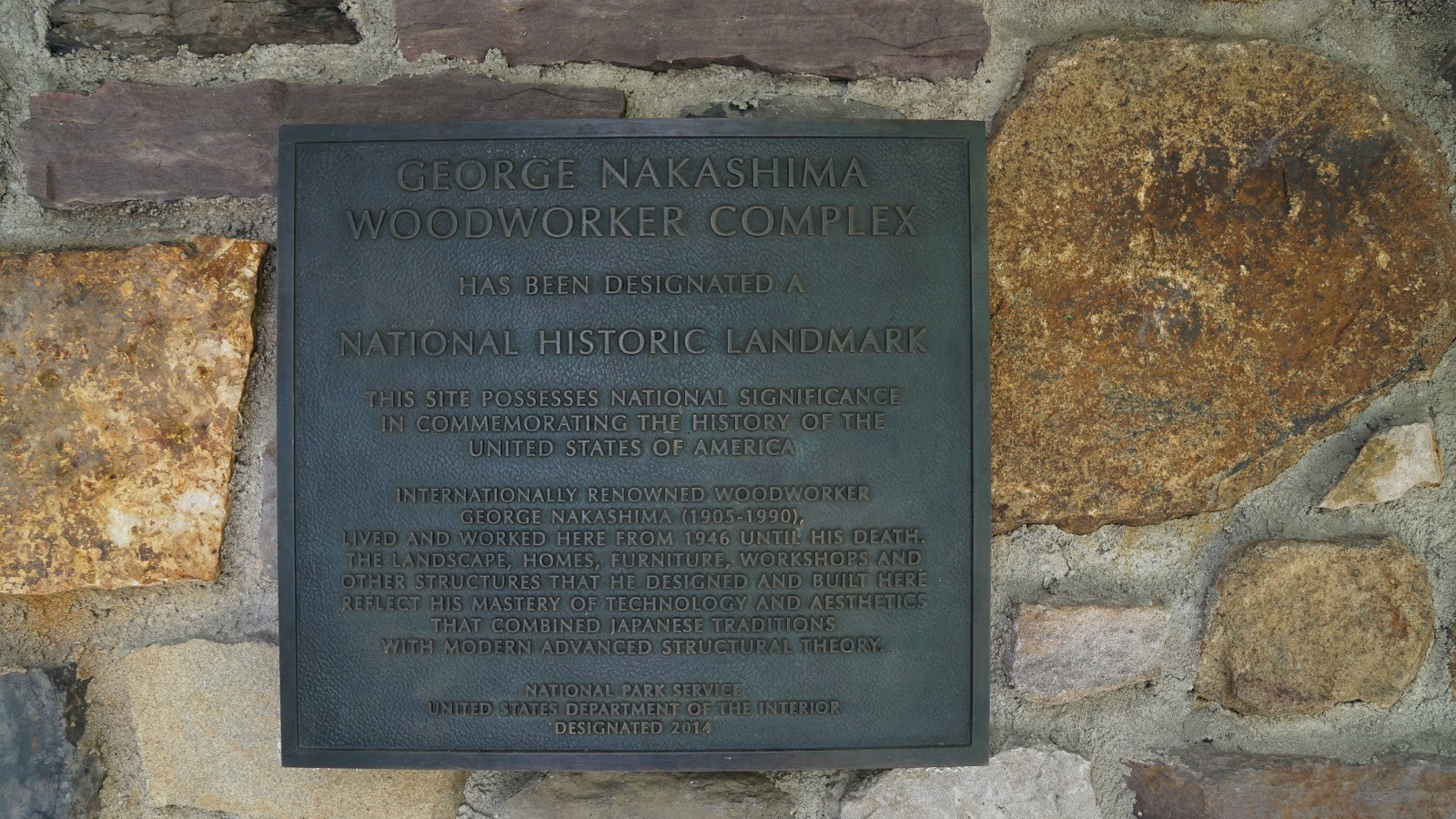New York City, 7:00 AM, the 2-hour road trip ahead of us would allow plenty of time to soak in the gradual transition from the Manhattan skyline to the rural landscape of eastern Pennsylvania. Watching the sun climb behind our white Suburban (which had become our mobile office for the day) we exited the Lincoln Tunnel and turned our conversation and thoughts to what lay ahead; the town of New Hope and home of woodworker, George Nakashima.
Everyone can remember the first time they heard about the work of George Nakashima. For some, this is in the trenches of design school, for others it is through curious self-initiated investigation, and for many this introduction is given in moments of serendipity over a dinner table or chance encounter with one of Mr. Nakashima’s wooden masterpieces. For almost everyone though, the name “George Nakashima” brings to mind a remarkable design heritage and a seemingly endless wealth of timeless inspiration. For the nine of us in our fully loaded SUV, a rare opportunity for a private tour of the Nakashima Foundation was a long-awaited adventure.
The opportunity to visit the foundation arose months prior through a swell of common interest in Lawrence Group’s New York office surrounding the work of Mr. Nakashima and a collective desire to make the pilgrimage to the foundation in New Hope.
After some research and scheduling coordination, we settled on one of the selected dates made available by the foundation administrators. Now, several months later we were pulling up to the property to begin the tour. After parking next to the handful of pickup trucks driven by the small staff of woodworkers we were greeted and led to the Conoid studio where we removed our shoes and met George’s daughter, Mira Nakashima.
Mira graciously invited us to sit in the main space among a priceless collection of chairs, stools and even a custom piano bench – all held together with the dovetail and butterfly joints that have become unmistakable icons of the Nakashima tradition. Mira led us through the remarkable history that brought the Nakashima family to New Hope in 1943 and the circumstances by which George established one of the most significant furniture design studios in America. After a lengthy conversation and generous responses to all our questions, we continued our tour through the remaining eight buildings that house the foundation’s network of shops, wood storage, and reception spaces.
Each new space we encountered as the day unfolded revealed more insight into the richness of the Nakashima story. The portion of the complex dedicated to furniture making is made up of The Chair Studio, Main Workshop, and Finishing Department with several additional buildings including the Reception House and Main Showroom that are oriented towards foundation guests and general public. We talked about the design (many buildings feature hyperbolic paraboloid roof structures), materials, and workmanship of each building as we filtered through at a leisurely pace.

Ending our tour at the arts building, our group collected in the small cloister at the south-west corner of the property to reflect on our experience and the moments we would take with us.
For me, the influence of the visit can be best described in a simple story Mira told as we were sitting in the Conoid studio. Mira shared how a local mill owner and one of the oldest friends of her father would salvage and sell Mr. Nakashima pieces of timber that were not high enough quality to be used in conventional furniture building. Mira recounted a particular incident when an entire boxcar showed up to the mill full of free-form and imperfect slabs, to which the mill Foreman exclaimed in distress that someone had made a mistake and shipped the wrong pieces – not knowing that these were the pieces her father would later use to create many of his masterpieces. This is how Mr. Nakashima began building furniture in New Hope, by acquiring the second-tier wood he could afford and using masterful techniques and joinery to elevate these humble materials. Mr. Nakashima felt it was his responsibility to make the most beautiful furniture from what was available. Tales like this and our experience touring the foundation are testament to how a lifelong commitment to do the best work possible and embrace the tools at hand have made the legacy of George Nakashima the story of how one person continues to influence generations of creative minds.
This blog was posted by Kyter Steffes while serving as a design professional at Lawrence Group.







